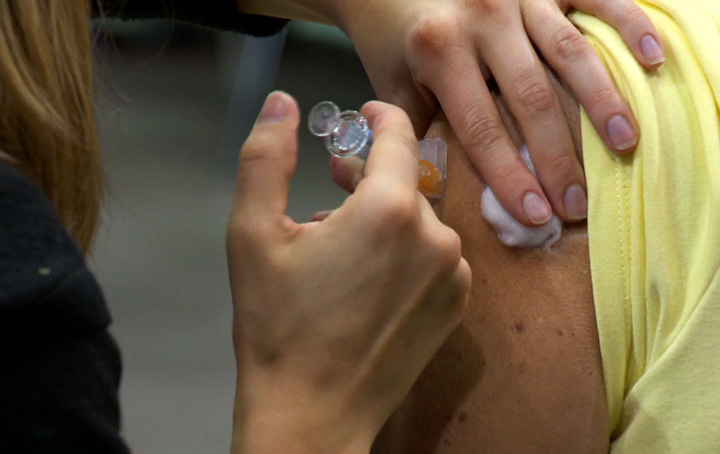Wonder why some Canadians have to scramble to find a flu shot this year? People may be tempted to blame the authorities – their provincial or territorial government – but to do so would be unfair.

If people are looking for a culprit for this year’s flu shot shortage, they should probably stand in front of a mirror.
It’s as simple as this: Canada doesn’t have more vaccine because it hasn’t used more vaccine in the past.
Flu vaccine is a made-on-demand business. The viruses it protects against change all the time, so the viruses in the vaccine must be changed too. That’s why flu vaccine is reformulated every year, and why flu shots are given annually.
READ MORE: What you need to know about flu activity across Canada
That means there is no market in 2014 for vaccine left over from 2013. So the vaccine manufacturers take orders, and make only as much as countries say they want.
And once they deliver their orders, the manufacturers can’t make more. For one thing, it would take too long. The manufacturers made this winter’s vaccine over a period of weeks in the spring and summer of 2013. And for another thing, the manufacturers are now busy making vaccine for the Southern Hemisphere winter.
Canada’s flu vaccine contract requires manufacturers to make an overage – an extra five per cent, in case the country needs it. Dr. Gregory Taylor, deputy chief public health officer for the Public Health Agency of Canada, announced on Friday that Canada’s manufacturers have been asked to provide that extra vaccine this year.
In fact, the country has found extra 245,800 doses of vaccine (the overage and some FluMist vaccine from the United States), and that vaccine is being secured. It has also identified another 360,000 doses which were made for countries that decided not to complete their purchases. Canada may try to buy all or some of that if the demand for shots continues to outstrip the supply.
For the 2013-14 winter the combined Canadian purchase was 10.4 million doses, Taylor says. With more than 30 million people in Canada, why wasn’t it larger?
Before one flu season finishes, provinces and territories have to decide how much vaccine they’ll need for the next winter. The orders for this year were placed in February, 2013. Back then, the provinces and territories had no clue how bad this flu season would be, or how many people would want a flu shot.
They would like everyone to get a shot. In fact, most provinces and territories give the shots for free to anyone who wants it. But they know from past experience most Canadians will not roll up a sleeve.
READ MORE: Parental anxiety over vaccine reactions highest with first-born children
Statistic Canada’s Canadian Community Health Survey gathers information on how many Canadians get a flu shot. Since 2009 the rate has ranged from a high of 32.2 per cent of Canadians (in 2009) to a low of 25.5 per cent (in 2010). You can see the data here: http://www.statcan.gc.ca/tables-tableaux/sum-som/l01/cst01/health102b-eng.htm
So though public health would like 100 per cent of people to be vaccinated against flu, they know that generally between a quarter and a third of Canadians will get a flu shot.
They cannot buy vaccine for everyone just in case. Flu vaccine isn’t as expensive as some other vaccines, but flu shot programs aren’t cheap either. And every dollar spent on flu vaccine isn’t spent on some other public health program. Plus they are bought with taxpayers’ dollars. So the provincial and territorial health ministries look for the Goldilocks fit when they are placing their vaccine orders: not too little, but not too much. They don’t want to turn away people, but they don’t want to waste money.
This year’s orders would have been calculated on population estimates and historic use patterns. The provinces and territories bought what they thought they could use. They had no way of knowing in February of 2013 that thousands of Canadians would brave frigid temperatures in January of 2014 to try to find a flu shot.
Will the provinces and territories increase next year’s purchase orders, which will have to be placed soon? Maybe. But this kind of elevated demand for flu vaccine is a mercurial thing; in the past, anyway, ithasn’t translated into long-term increased demand. So the province and territories will have a tough job trying to figure out what the Goldilocks fit is for the winter of 2014-15.
READ MORE: Public health watches foreign outbreaks as diseases spread


Comments